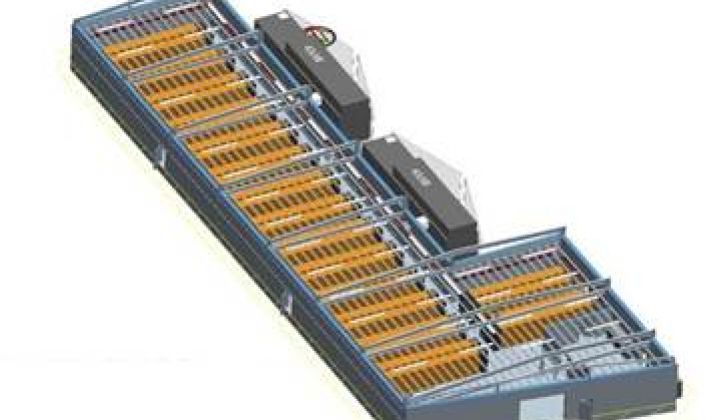To fund the $53.5 million test, DOE will supply nearly $25 million and other partners, including the California Public Utilities Commission and A123 Systems, will supply over $29.9 million.
The battery storage system is now being installed and is scheduled to go operational late in 2012. Testing will run for a minimum of 24 months. The lithium-ion phosphate battery system will take four hours to charge and will discharge over four hours. It will occupy an unmanned 6,300-square-foot building at Monolith. Monitoring will be done remotely.
“It’s a fairly big system with a lot of pieces,” Irwin noted. “We had a lead acid battery storage device at our Chino substation that we deployed in the mid-'90s,” he remembered, “that was a little bit larger, about 20 percent larger, in terms of its capabilities. And the footprint was about 10 times larger.”
The A123 Systems battery, Irwin said, has “approximately eight times the energy density” of the system SCE tested a decade and a half ago. “A123 Systems has other technologies that are more energy dense,” Irwin added. “There are tradeoffs they had to make for the performance we require.”
SCE will test a cylindrical battery storage technology from A123 as part of a DOE smart grid project in California’s Orange County. That technology will have a 15-minute charge-discharge cycle. “It is more of a power device,” Irwin explained. “You’re trying to enhance the volume you can do quickly but you’re not looking for a long duration.”
_540_449_80.jpg)
The more energy-dense prismatic technology is newer than the Tehachapi technology and will, Irwin said, be the first such device to be used in a smart grid application.
SCE saw, in a DOE call for proposals on energy storage testing, the opportunity to get Recovery Act funding for further study of a 66-kilovolt segment of its Tehachapi system that it had been watching for a couple of years. The study will look at 13 separate operational issues SCE wants to more carefully study, ranging from voltage stability to curtailment, Irwin said.
Some of the tests of the lithium-ion battery system will center on solving transmission system integration challenges associated with handling the electricity generated by the thousands of turbines built in the Tehachapi Mountains since the early 1980s to harvest the region’s abundant wind resource. SCE wants to better understand some operational constraints it has encountered over the many years of working with Tehachapi wind.
SCE’s 66-kilovolt system, Irwin explained, “is generally thought of as sub-transmission” and may not remain under California Independent System Operator (ISO) control. But while it is, SCE wants to look at how to deal with higher and lower voltage operational factors. “Testing a device like this would potentially demonstrate that we could solve or contribute to solving such system performance problems,” Irwin said.
SCE refers to device functions as applications and the battery system’s success will be measured by how effectively it fulfills the requirements of the application.
For voltage control, the questions will be, Irwin said, “Did we control voltage within the range that we were trying to? Did the device automatically control it? Did voltage stay within the parameters we designed it to? And what was the impact on the circuit?”
Another test will involve “shifting energy from the off-peak to the on-peak. Eight megawatts, four hours,” Irwin said. “We will look at what we call round-trip efficiency -- energy-in versus how much energy out, and the auxiliary use of the device while it’s charging, discharging and at idle. What is the total efficiency of the system in that application?”
The Tehachapi and Irvine projects are part of SCE’s larger approach to energy storage. “Our objective is to make energy storage a tool that we know,” Irwin said. “We see roadmaps of manufacturers to get to price points that we think could lead to larger deployment.” That is not yet a certainty, he stipulated. But “if that price point arrives,” he said, SCE will “be in a position to understand exactly what performance looks like and exactly how reliable the tool is.”
Asked about that price point, Irwin declined the request to be more specific, but referenced the U.S. Advanced Battery Consortium goal of $20 per kilowatt.



